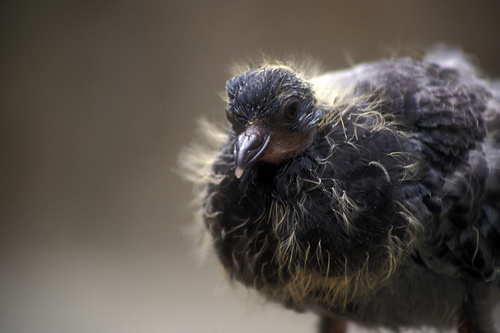 As parents, we want the best for our children. We send them to the best schools. We want them to have the best teachers. We buy them the best equipment to learn and study. We spend time and money to provide our children with the best education we can afford to give them. WHY? Because education is important to help them achieve their goals and be successful in life. Therefore, we give them every opportunity possible to succeed.
As parents, we want the best for our children. We send them to the best schools. We want them to have the best teachers. We buy them the best equipment to learn and study. We spend time and money to provide our children with the best education we can afford to give them. WHY? Because education is important to help them achieve their goals and be successful in life. Therefore, we give them every opportunity possible to succeed.
Also, we must do the same for our young birds in training for them to have the best chance to succeed and to win the large prizes. They are like young children ready to learn. Their education starts the day they are born. From the first day, the fancier must provide the best feed, vitamins, minerals and electrolytes: a regular grain diet of 15-17% protein, plus raw Spanish peanuts, safflower, poultry pellets 21-28% protein, fresh grit each day, Liquid vitamins, minerals and electrolytes in water 2-3 times a week.
We must place small grains in the nest bowl during each feeding when young are 14 days old. They learn to eat at an early age. We dip their heads into water at 21 days old once or twice a day to encourage them to drink. This education starts at an early age because we do not want any setbacks in growth, development of muscles, bone structure or feather quality when we wean the young from their parents at 26-30 days old.
We never limit or ration feed for young birds in training! This means that the birds get all they want to eat of quality grain from birth until the last day of a race series. Just like your children, you want them to grow to be big, strong and healthy. Do you cut your children’s food and drink when they are growing? The same applies to young birds. When we wean the young birds at 26-30 days of age, it is another learning experience. There should be feed and water in front of them at all times during this weaning period, about 4-6 days. We want no set back in growth and development mentally or physical. We want them active and alert at all times.
When we settle the birds to the flying loft, we keep it simple. Show them where to enter or trap safely. We place them through the trap a few times by hand, GENTLY. This gives them the experience to go through the trap. A few peanuts waiting for them after they trap will encourage them to trap quickly. This routine should never change: Always the same – loft fly or exercise, land, trap, peanuts waiting for them.
After the young birds start to loft fly for about 3-4 weeks, they will become stronger and more curious. They will start to leave the area of the loft and spend time routing (checking out surroundings away from the loft). They sometimes will spend 20-30 minutes flying out of the sight of the trainer and the loft. At this point, the birds show the trainer that they are ready for road training tosses. Road training tosses should not begin until the birds start routing.
Again, we must educate the birds to the training basket. We place them in the basket a few at a time in front of the loft. We let them stay in the basket for about 10-15 minutes and open basket for them to fly to the loft safely. We repeat this experience 3-4 times, a few birds at a time, before we start road training. This will enable the birds to feel safe in the basket and not confused.
Education: Important to Young Bird Training (Part 1 of 2) by Bob Prisco

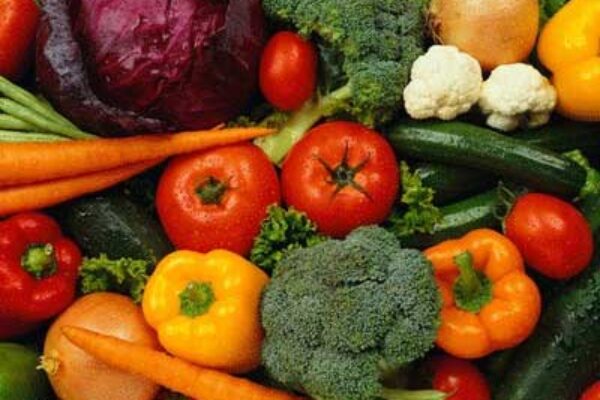

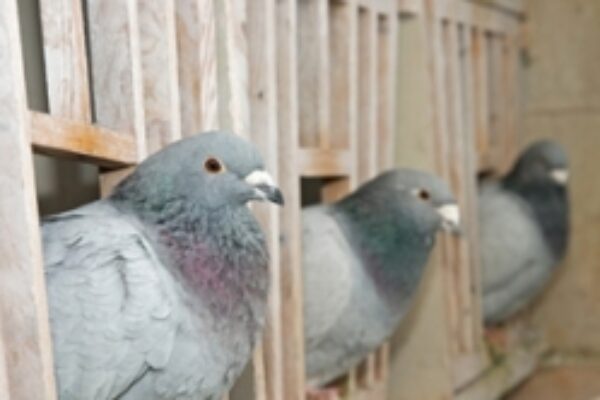

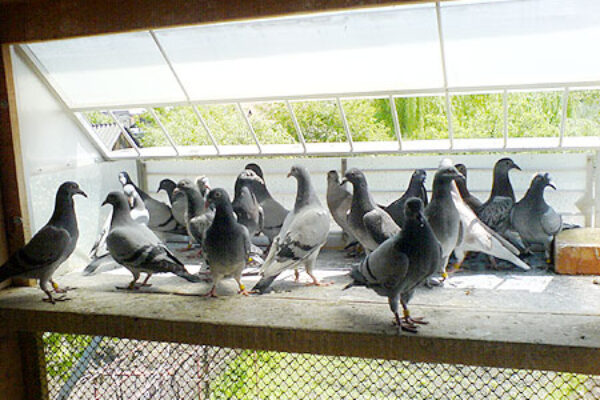
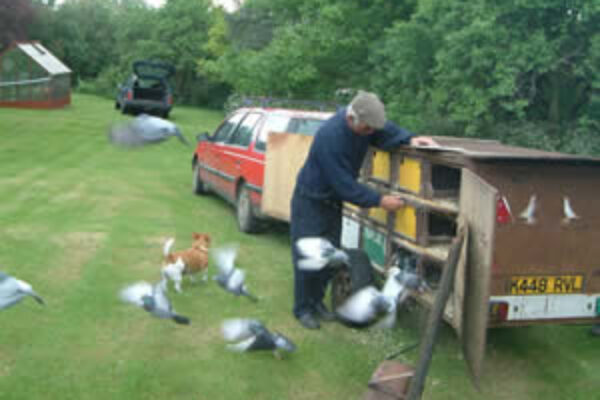


well everything really start at home loft , and it tell what kind of a fancier you are by looking how your pigeon fly and range.
I have a video on thison my site
I’ve got to say the article i’ve just read is very similar to what I trid this flying season and this is the best the youg birds have flown. The way I fed the youngsters nothing special i.e. just good corn at them, all the time, when letting them out, away for easy 45mins to 1hour, (if a tip) on the corn for all birds old and young 3x times aweek omega 3-6-9 oil and complane for us old buggers p.s. ALL birds very healthy
If your birds love their loft,and trust their master then they will enter their loft with no problems.I feed my young birds all they can eat,morning and night.Never ever Keep food from your young birds or they will never grow into strong healthy old birds.I blow the whistle every time I feed them,and every time they come home from a race,I blow the whistle and feed them immediately.Routine is the key.Never loose your cool around your birds.When they trust you they will obey you.I always scrape out the loft with the birds inside with me because this gives me valuable time with them.Talk to them so they get used to your voice.When they are on the perch,try to tickle them with one finger around the beak area and let them peck at your finger,and let them win so they are not scared of your hand.There is always a stubborn one,but with patience,and routine,the stubborn one can turn into the most dedicated,eager to please racing pigeon you ever had.So remember,don’t starve your birds.Thats the wrong way to go.
pahinye marami huh
kualiti bgay mo sakin huh
ya i think that if there are fed regular and when stating to out flying you can cut back the food and get them int o a rythem and once like that when there on the road training and get back to loft they will go in looking for food so just have small amount there the ones that are late will soon cope on whats happening and will be more eiger to beat the others home then so in end all the flock should arrive togeather
feed should never be left in your feed tray on the floor at night, so the next morning,train your birds first thing. if you are going to let them back out to loft fly that night feed lite! at this point of time you need to make your birds trap fast and 4 the one’s that don’t will that night, your birds will be ok feeding schedule so if you are going to train, i would feed lite that morning than that night feed 2/3 more, you need to play around with this, it will work.
Also, how do you accomodate the fact that the first birds in (from a single toss) will eat all the peanuts before the others get home?
Good point David. I like to put some goodies (food treats) on the landing board, just over my clock antenna, that seems to help my clocking too
Hard to argue with those points. However, if food is always available, how do you train the young birds to enter the loft on command (or quickly upon return from a flight/race)? Hunger seems to be the only method I have to control my birds behavior. If there is another, I’d love to know it. Peanuts in waiting seems to be your answer, so are peanuts enough of a reward to overcome a lack of appetite?